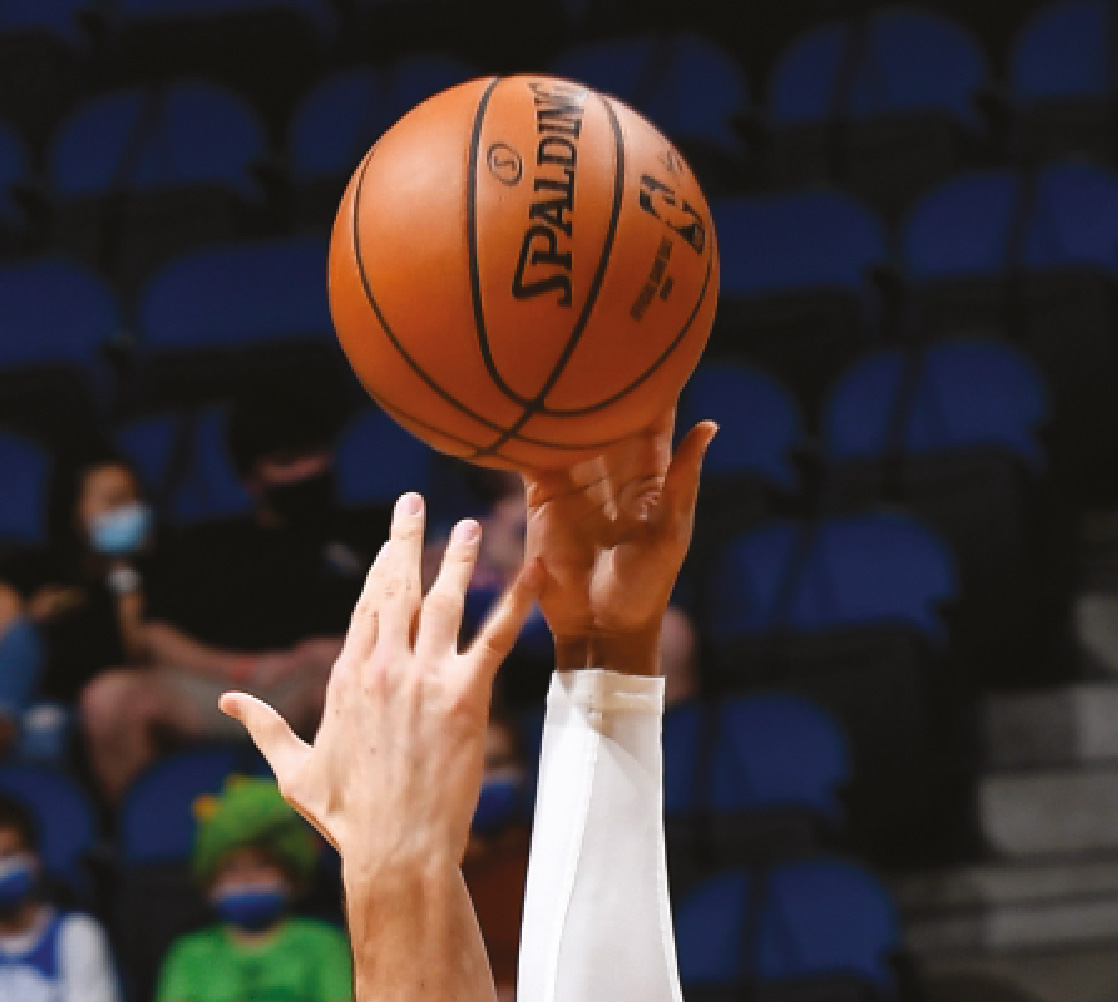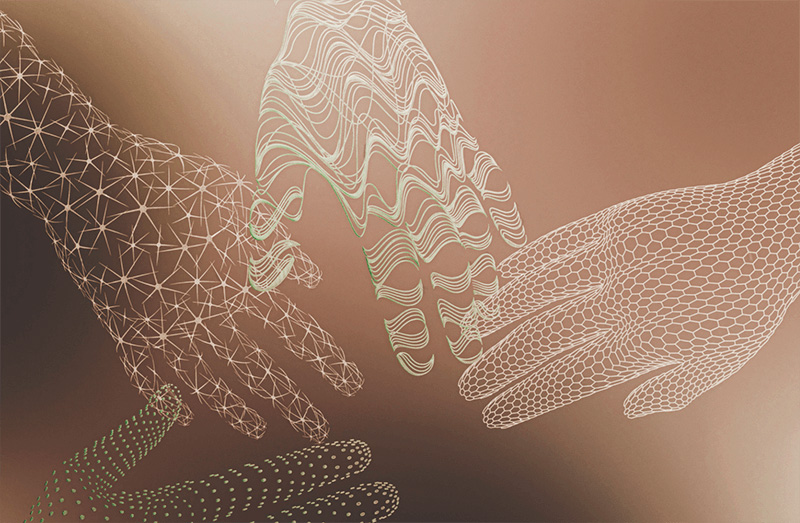Oris Stuart is at the heart of the NBA’s inclusion story.
Of all global major sports, basketball – with just five players on court – provides a visceral case for inclusivity and teamwork. An 11-person cricket or soccer team might be able to manage, at least temporarily, with one disengaged player, but not a basketball team. Duke University’s famous basketball coach, Mike Krzyzewski – known as Coach K – uses the analogy of a fist to explain the interdependency and effective teamwork required to win as a basketball team. Each finger represents a member of the team. To make the greatest impact, each member of the team must come together like a fist, unified in mind and body, so the whole becomes greater than the sum of its parts.
While such teamwork is necessary to win on the court, this unifying spirit is also driving the NBA’s off-court efforts in the area of diversity and inclusion. “Our players and coaches are committed to these issues of inclusion, equity and diversity,” Oris Stuart, chief people and inclusion officer at the National Basketball Association (NBA), tells Dialogue. “It really speaks to the priorities of our players and coaches, and I find it quite rewarding that at every level of our league, these topics are central values – they are how we do what we do. That’s one of the most rewarding parts of the role. There’s obviously integration between what happens on the court, and what happens in our offices.”

Stuart, a Duke University alumnus and former Korn Ferry partner, never doubted that the NBA’s heart was with diversity, equity and inclusion (DEI). Yet emotional buy-in alone is insufficient. Increasing DEI in organizations is fiendishly difficult to realize. It is more than big ideas: execution is key. Just as basketball coaches have a playbook that translates game strategy into plays to run on the court, Stuart speaks of the playbook he has helped the NBA create as crucial to converting DEI strategies and goals into action. It’s clear the playbook has made a difference. Stuart explains: “The playbook enables our teams to adapt the guidance to their unique circumstances. One of the things that I celebrate is that when I joined the league five-and-a-half years ago, the NBA had one team, the Atlanta Hawks, that had an executive-level leader for diversity and inclusion. Now, well over half our teams have appointed someone at that level, and the rest of the teams have someone focused on this topic. So, I think the playbook and our strategies of providing resources and guidance on this topic have delivered results in terms of each of our teams taking it very seriously and embedding it into their business practices.”
Five leagues sit within Stuart’s portfolio: the NBA, the WNBA, minor league the NBA G League, the e-sports NBA 2K League, and the newly formed Basketball Africa League. Stuart’s own position is fundamental to the NBA’s rapid shift towards becoming a DEI exemplar. As part of a fully integrated role, Stuart now oversees human resources for the organization alongside the design and execution of DEI strategies reaching across the five leagues.
“This combined role of chief people and inclusion officer is a relatively new development,” he says. “But it allows me to even more deeply integrate our strategies around diversity and inclusion with all of our practices and policies at every stage of the talent lifecycle – from recruiting to onboarding and selection to development, advancement, and retention, all of those activities.”
It’s Stuart’s hands-on, adaptable approach to DEI, coupled with his ability to develop key relationships, that has been the winning formula. “I had the privilege of traveling across the country and meeting with each of our teams to have conversations around their strategy for diversity, equity, inclusion, and to deliver training and meet very intimately with their leadership teams and their workforce,” Stuart reveals. “It’s something that we are committed to at every level in our league. And while the decisions and activities and execution do happen at the local level, we’re very much involved and supportive in terms of providing guidance and resources.”
Inclusion instinct
While trying to drive broad organizational change with strategies, playbooks, and influence, Stuart also understands these challenges as fundamentally human. As he poignantly conveys: “I believe we all have a diversity reflex – what we need to do is build an inclusion instinct.”
On this front, what works? “It comes down to having experiences and exposure that change your inner narrative, that add depth and context to what’s happening around you, that you can’t quite get without touching and feeling and seeing and learning,” says Stuart. So how do you get that? “Well, you do some things differently than you’ve done them before. You know, if we keep doing what we’re doing, we’re going to keep getting what we’re getting, and keep thinking like we’re thinking. One of the things we’re very focused on is inviting people into unique situations and unique conversations. You can expand your mindset and increase your cultural agility by engaging with people who have had different lived experiences.”
Paradoxically, says Stuart, the key to enjoying and learning from difference – the inclusion of diversity – is to identify common ground. The three people in our interview room hail from three different ethnic backgrounds. Yet as a trio we share one passion. “We, all three, love basketball and have that similar interest,” says Stuart. “So we’ve got some relationship equity to draw upon. If you and I connect on something that we have in common, then we can build some kinship, and get to a level of familiarity, comfort and trust. And then I can learn from you because I don’t see you as this ‘other’– I don’t see you as this person that is alien to me.”
Learning to open up to each other is key, reflects Stuart. “You tell me your stories, you tell me your beliefs – and that gives me additional context and perspective, and it increases my capacity to partner and engage with you, and to exploit our differences for breakthrough outcomes. When you break down the different elements of diversity, what you find is an incredible number of similarities. We’re focused on connecting people across those similarities so that they can then learn and appreciate the differences.”
One experience that Stuart attended which encourages such sharing was a ‘Café in the Dark’ blindfolded dinner. “We completed an entire meal – a 90-minute experience – totally blind, served by blind waiters and waitresses, and hostesses and hosts,” recalls Stuart. “That’s just one example of how you build context and you walk in someone else’s shoes. It’s those kinds of experiences that can unfreeze you and give you the capacity to start to think differently, and then in turn, act differently.”
Once that capacity has been developed and unlocked – that’s when measurement kicks in. “It’s not enough to create the experience, you also have to create the expectation that you’ll do something different,” says Stuart. “You’ve got to change policies and practices and, finally, you’ve got to create accountability around it as well.”
A moral and commercial imperative
The moral imperative notwithstanding, the commercial case for inclusion is as strong in the NBA as it is elsewhere in the sporting arena and the wider business world. Without inclusion, innovation is improbable. “The inclusive instinct is in our best interest,” says Stuart. “Things in every sector are changing incredibly rapidly. And if you’re doing the same things the same way, one season to the next, or even one quarter to the next, then you’re working your way to obsolescence.
“You drive innovation by inviting diverse opinions and perspectives and thinking styles and experiences into the problem-solving process, and then enabling those ideas to take root, to coalesce, and to lead to new ideas that were not conceivable without those differences. So, as a leader, if you’re going to the same people, if you are only considering the same practices – if you are not intentionally and purposefully seeking perspectives and advice from different sources and disrupting what you’ve been doing – then you’re missing an incredible opportunity. And ultimately, you’re going to get disrupted.”
The NBA is recognized as a player-driven league. In that respect it is similar to the global business landscape, which is fast becoming a talent-driven world. That has to shape how leaders act. Stuart notes: “Without a proactive reach, winning the war for talent is impossible. Leaders have got to do more than be open to new ideas and different ways of thinking – they’ve got to seek it, and then enable it.
“That’s what diversity, equity and inclusion are all about. It’s about getting the best talent. If you’re naturally reaching out and getting the best talent, it is naturally going to be diverse. If you don’t have diverse talent, that’s because you are not naturally accessing the widest pool of available talent.”
Hiring diverse talent is a critical first step, but, as a leader, “You’ve got to cultivate that talent,” Stuart says. “If you are managing to a norm, managing to a particular profile or a particular cultural style, then people in your organization will find themselves needing to cover certain aspects of their personality or their background. The energy that it takes to cover yourself is energy that’s being expended and made unavailable for innovation and other productive activity. One of the things that you’ve got to do as a leader is create an environment where people can bring their best selves, and their whole selves, to work. That’s the challenge for an inclusive leader – if you can do it, you can get the most out of your people and achieve extraordinary outcomes.”
Stuart believes that, over time, inclusive leadership styles will become preeminent. In a talent-driven world, people will choose to work for people that command the inclusion instinct. “The inclusive leader will grow followership. And the inclusive leader will have individuals that will go above and beyond for her,” says Stuart. “And so, in turn, they’ll be more successful – and they will naturally build more inclusive leaders, who will then go on to have their own successes.”
Stuart provides a living example of the power of sharpening this instinct: inclusivity breeding success. It’s inspiring and energizing – and has given me a new reason to love the NBA.




